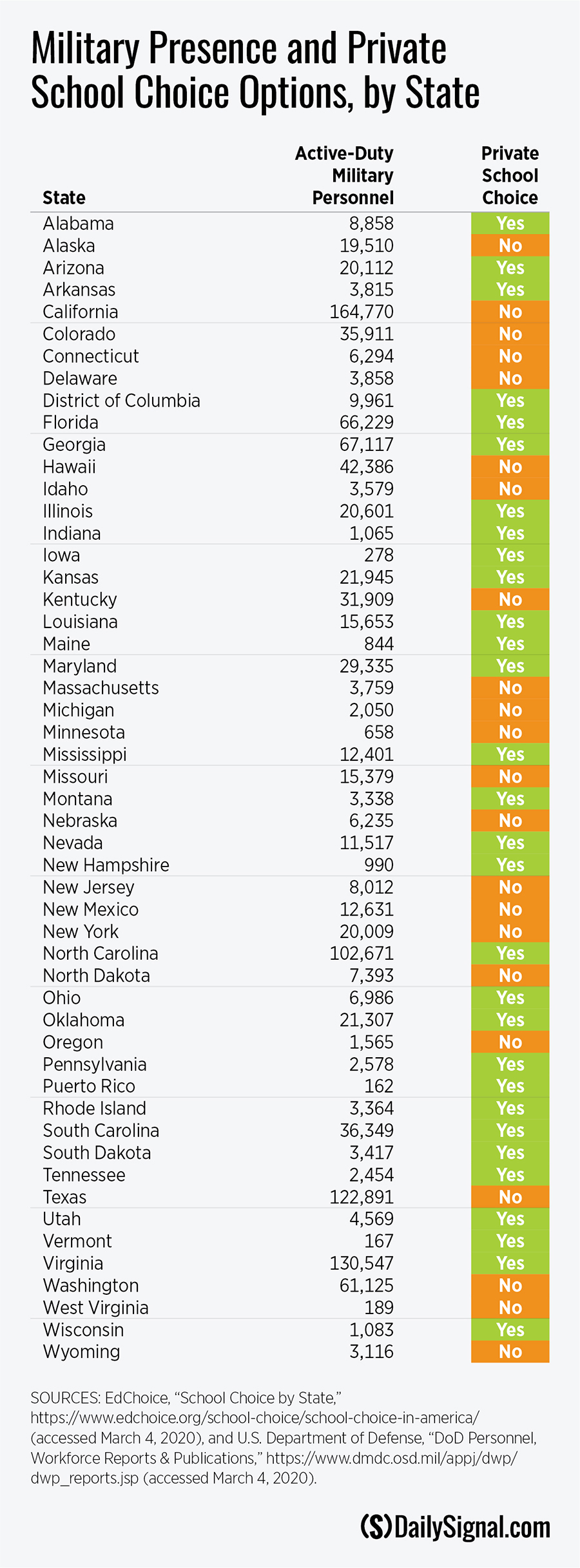America’s service members long have been concerned about the lack of access to effective schools for their children. In fact, more than a third of active-duty service members have considered leaving the military altogether because of the school their child would have to attend at their next duty station.
The coronavirus pandemic has exacerbated these concerns. Physical school buildings largely have been closed since March, and public school districts have provided access to online instruction to wildly varying degrees over the past few months.
An estimated one-third of school districts tracked by the Center on Reinventing Public Education are not requiring schools to provide remote instruction.
With more than 80% of children of active-duty military families attending the public school closest to their base, this is a major problem for education and the armed forces. Even before the pandemic, only 34% of surveyed military families said they would choose public schools as their first option.
Now more than ever, military families need education choice.
>>> What’s the best way for America to reopen and return to business? The National Coronavirus Recovery Commission, a project of The Heritage Foundation, assembled America’s top thinkers to figure that out. So far, it has made more than 260 recommendations. Learn more here.
The long-standing structural problem is that when service members are stationed at a new base, it is also a reassignment for their families. The children of military families often have no other choice than to attend the public school nearest their parents’ base assignment, regardless of whether it is a good fit. And those moves can be frequent.
“With these moves from one military installation to another, often every one, two, or three years, there is one constant: You never know the quality of the local public school or how the transition from one school to the next will work out,” wrote Frances Tilney Burke, a military family mom. Tilney Burke’s two daughters, at ages 10 and 11 years old, already were in their fifth school.
She cited a longtime problem that military families have to struggle with: The lack of a guarantee “that children’s education will shift seamlessly between the states, or that students will be granted enough credits to graduate from high school on time, depending on the restrictions of the county or district.” This is compounded in the present moment.
Now the Tilney Burke kids can’t even rely on those schools being open when they get their new assignment. The existing problem of assignment-by-base schooling has been magnified exponentially by the COVID-19 pandemic.
Washington long has recognized its special obligation to the children of service members, since preserving national security is a constitutional duty of the federal government. The Defense Department already operates 50 base schools, Domestic Dependent Elementary and Secondary Schools, at 15 installations in the eastern United States.
These schools for military families regularly perform above the national average. Last year, for instance, eighth-graders tied their Massachusetts peers for the best scores on the National Assessment of Educational Progress.
Unfortunately, only 4% of school-age children in military families have access to base schools. Military-connected children whose parents are stationed off-base or in the western United States do not have access to them whatsoever.
To get through this pandemic, provide children with education continuity, and address long-standing issues in education access for military-connected children, Congress should immediately provide education savings accounts to active-duty military families.
These accounts would provide funds directly to military families to pay for education options such as online learning, private school tuition, education therapy, private tutoring, and other services for their children. At the same time, leftover funds may be rolled over year to year, and remaining funds also may be used for college expenses. The accounts would accommodate their demanding lifestyle and provide education consistency during the pandemic.
The idea of education savings accounts is hugely popular among military families. A remarkable 72% of respondents in a nationwide survey of active-duty military families expressed support for education savings accounts.
Now is the time to provide military-connected families with education options. Nearly half of active-duty military families live in states with no school choice options. California and Texas, the states with two of the top three largest populations of active-duty military personnel, provide no school choice options.

The COVID-19 pandemic has demonstrated the need for military-connected families to have school choice options.
Education savings accounts are a key to providing military-connected children with a cohesive and safe education. With their education savings accounts, parents can tailor children’s education to meet their needs, and to help them immediately access education content and tutors while schools across the country are closed.
Congress should pilot an education savings account program for military-connected children in the United States. The pilot program could be tested among the 479,000 children whose families do not have access to Domestic Dependent Elementary and Secondary Schools.
Education savings accounts would provide education flexibility and peace of mind to military families, help improve recruitment and retention, and build a stronger and more mobile military overall.
With schools closed to military families across the country right now, it’s a critical reform.

























